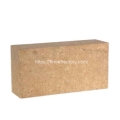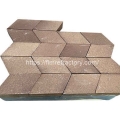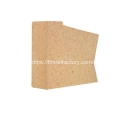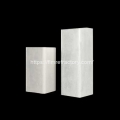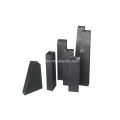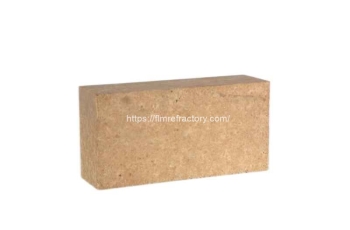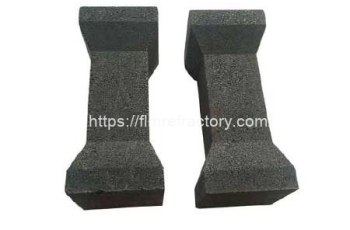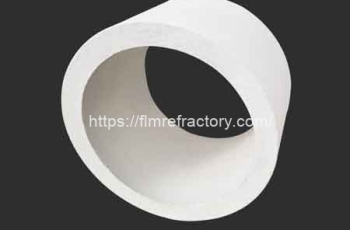- Performance. Innovation. Worldwide. Your trustworthy Refractories Manufacturing Partner--Fireramo
- +86 175 3769 7777
Acid Resistant Brick
- Category: Alumina Brick
- |
- Author: Fireramo
Acid-resistant bricks have excellent acid and heat resistance and can be used in acidic environments for long periods of time without damage. Acid proof bricks are commonly used for masonry lining of a variety of equipment requiring acid corrosion resistance.
- Main Composition: Al2O3≥28%
- Application: Industrial Furnaces and Equipment
- Raw Material: Chamotte Clay
- Color: Yellow
- Refractoriness: ≥1700℃
- Acid Resistance: ≥98%
- Capacity: 3000 MT per month
- Package: Export wooden pallets and polyboard
Search
Contact
High quality refractory bricks
Product Details
Acid Proof Brick for Sale
Refractory Acid Resistant Brick is a high-performance refractory material that combines excellent refractory properties with acid resistance to provide a superior solution for high-temperature, corrosive environments. The main components of acid-resistant bricks are quartz, feldspar, clay, and other raw materials, which are made through high-temperature oxidative decomposition. Acid-resistant bricks are widely used in a variety of applications requiring acid and alkali corrosion resistance, such as chemical, petroleum, pharmaceutical,food, and other industries.
As a Acid Resistant Brick manufacturer, we offer a wide range of Refractory Acid Resistant Bricks.Fireramo Acid Resistant Brick range includes Al-28, Al-30, Al-35 and Al-40, each of which is carefully designed based on the key parameters of Alumina content, Bulk Density, Cold Compression Strength, Refractive Resistance under Load, Refractory Resistance, Acid Resistance, and Apparent Porosity, in order to meet the needs of different industries and fields. requirements of different industrial sectors.


Characteristics of Fireramo Acid-resistant bricks
High alumina content: Refractory acid bricks have a high alumina content, which gives them excellent stability and corrosion resistance at high temperatures.
Excellent Physical Properties: Fireramo Acid Resistant Brick products have excellent bulk density, cold compression strength, and apparent porosity, ensuring structural integrity and durability at high temperatures and in corrosive environments.
Excellent refractoriness and acid resistance: Fireramo acid-resistant bricks have excellent refractoriness under load and industry-leading levels of refractoriness and acid resistance to withstand extreme working environments.
Good stability: Fireramo acid-resistant bricks have been subjected to a rigorous process to achieve a low coefficient of thermal expansion and high thermal shock stability, ensuring that they are not easily ruptured or damaged during high-temperature cycling.
High acid and alkali resistance: Acid-resistant bricks contain more than 70% silica and are sintered, so they are not easy to oxidize at room temperature, have low water absorption, and have excellent corrosion resistance to many acids and alkalis.
Tight structure: the apparent porosity of acid-resistant bricks is usually below 20%, which ensures their corrosion resistance.
Acid-proof brick lining procedure
Acid-resistant brick lining is a masonry method used in acid-resistant corrosive environments and is commonly used in corrosive environments in chemical plants, oil refineries, power plants, and other locations. The following is a common acid-proof brick lining procedure:
Design and preparation: First, determine the specific dimensions, materials, and process for acid-resistant brick lining according to project requirements and design specifications. Prepare the required materials and tools to ensure compliance with safety and quality requirements.
Selection of materials: Select anticorrosive brick materials with good acid resistance, such as acid-resistant bricks and acid-resistant cement. Ensure that the selected material meets the design requirements and can withstand the specific chemical corrosion environment.
Surface Preparation: Prepare the surface to be masoned by making sure it is flat, dry and clean to ensure that the bricks will bond properly and provide optimum corrosion resistance.
Cutting and Positioning of Bricks: Cut and process acid-resistant brick materials as necessary according to design drawings or requirements, and then position and align them accurately according to design requirements.
Mortar Preparation and Construction: Prepare acid-resistant cement mortar and mix it according to a certain proportion. Then use the mortar to build up the acid-resistant bricks layer by layer, make sure that the mortar is evenly applied, there is no gap between the bricks, and the masonry is staggered according to the design requirements.
Curing and Maintenance: After completing the masonry, the acid-proof brick lining is cured and maintained. This usually involves slowly increasing the temperature or humidity to allow the mortar to dry and cure sufficiently to ensure that the masonry has adequate strength and corrosion resistance.
Quality Inspection and Acceptance: The completed acid-proof brick lining is inspected for quality to ensure that the quality of the masonry meets design requirements and safety standards. Acceptance is carried out upon completion and records are kept.
Acid Resistant Bricks Specifications
| Item | Fire-resistant and Acid-resistant Brick | |||
|---|---|---|---|---|
| Al-28 | Al-30 | Al-35 | Al-40 | |
| Al2O3(%) | ≥28 | ≥30 | ≥35 | ≥40 |
| Bulk Density (g/cm3) | 2.0-2.1 | 2.05-2.15 | 2.10-2.15 | 2.15-2.25 |
| Cold Crushing Strength (MPa) | ≥30 | ≥30 | ≥35 | ≥35 |
| Refractoriness Under Load (0.2MPa) ℃ | 1300 | 1350 | 1370 | 1420 |
| Refractoriness (℃) | ≥1700 | ≥1700 | ≥1770 | ≥1790 |
| Acid Resistance (%) | ≥98 | ≥98 | ≥98 | ≥98 |
| Apparent Porosity (%) | ≤20 | ≤20 | ≤21 | ≤21 |
Production process of acid-resistant refractory bricks
Ingredients: The ingredients of acid-resistant bricks mainly include siliceous materials, alumina materials, acid-resistant adhesives, acid-resistant mineral compounds and so on. The quality and proportion of these raw materials play a vital role in the quality of the bricks and need to be carefully prepared and tested.
Mixing: The raw materials are put into the mixer for mixing after fine screening and proportioning. During the mixing process, attention should be paid to the proportion and uniformity of various raw materials.
Molding: The mixed materials are pressed by the molding machine to make bricks of certain shapes and sizes.
Sintering: The molded bricks are sent to the sintering room for sintering. During the sintering process, the temperature is gradually increased to harden and form the brick blanks, and at the same time, the oxides in the quartz sand and kaolin undergo a reduction reaction to produce aluminum silicate and release gases.
Cooling: After sintering, the acid-resistant bricks need to be cooled to reduce their temperature and prevent them from deforming or cracking.
Inspection: After cooling, the acid-resistant bricks need to be inspected for quality, including appearance, size, strength and other aspects of the test.
Packaging: Acid-resistant bricks that pass the inspection are packaged to protect their surfaces and edges from damage, and at the same time facilitate transportation and use.
Specializing in refractory materials for over 20 years, we provide professional refractory solutions for the global high temperature industry.
Theme By Fireramo
